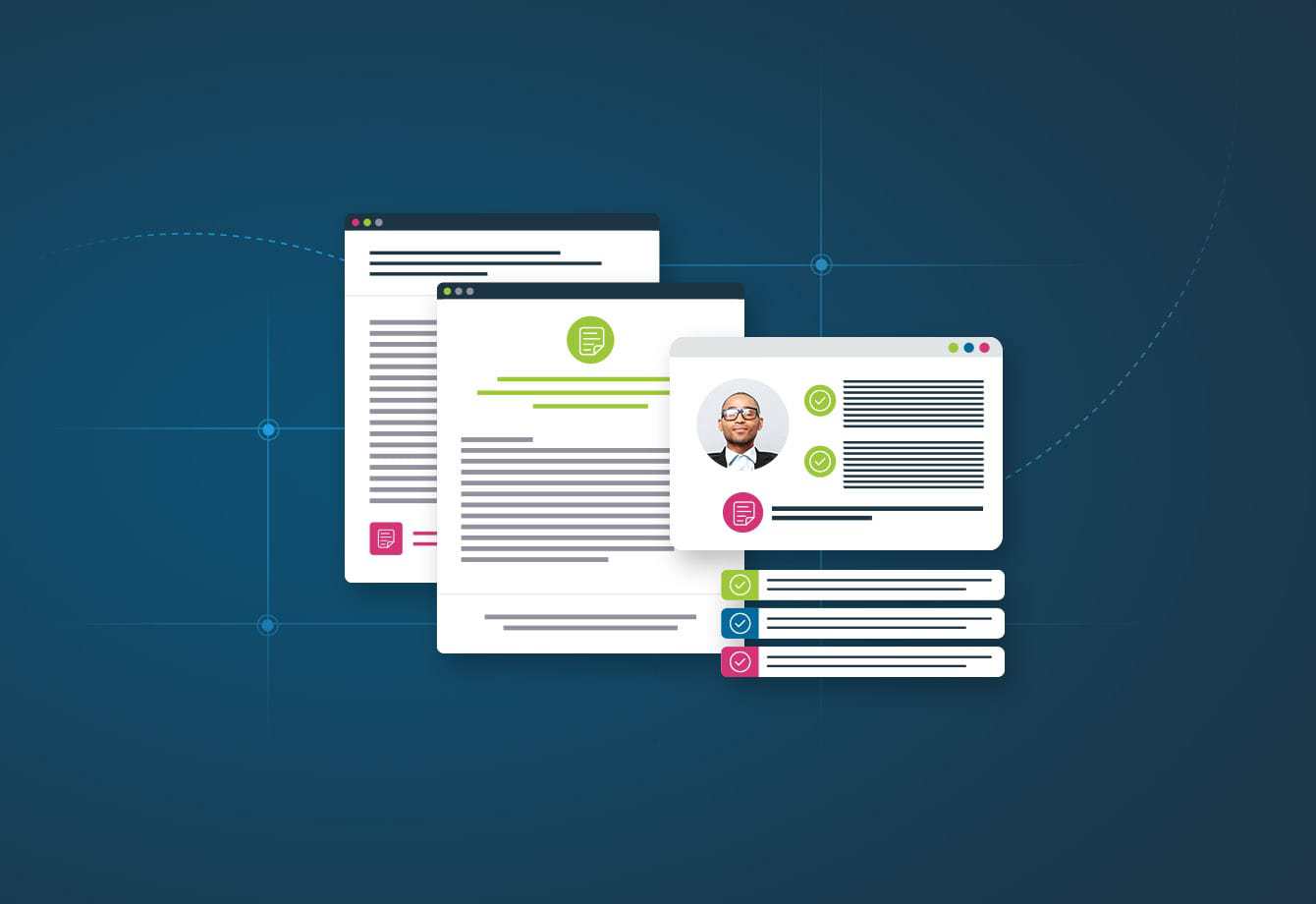I often say that proposal management is like baking a cake. Alright, that might not be the most original thought, but when you bake a cake, you expertly pull together diverse ingredients, typically from multiple sources. Then, you add your skill and flair to create a gorgeous and delicious pastry.
What is proposal management?
Proposal management is the process of creating and managing business proposals with the goal of winning new projects or contracts. It involves coordinating various tasks, such as understanding client requirements, developing a tailored solution, and presenting it in a clear, compelling manner. This strategic approach combines project management skills with business development strategies to effectively address and meet potential clients’ needs, enhancing the chances of securing business opportunities.
Fortunately, at least in my case, a well-baked proposal will add to the bottom line instead of, well, you get the idea.
Proposals are generally either a response to a request for proposal (RFP) or from a salesperson whose customer wants well-defined information, usually including pricing, onboarding or logistical details, company information, and so on.
The objectives of proposal management
The primary objective of proposal management is to help drive more sales. More specifically, the process objectives include:
- Determining the right opportunities
- Is the bid winnable based on similar past projects?
- Can you fulfill the customer’s needs?
- Is the request consistent with your company’s business objectives?
- Can the response nurture brand awareness?
- Selecting the right team – A typical response team might include a proposal manager, writer, editor, and a team of subject matter experts (SMEs). The SMEs, and frankly, the whole team, can come from any department in the company as long as their expertise aligns with the request.
- Crafting a quality response – Proposal management is just one of the places where sales and marketing intersect. It’s vital that the response represents the company in the best possible light, adhering to the company voice and tone while providing incentives for the customer to buy.
- Meeting customer expectations – Submit your well-crafted proposal within the allotted timeline and in the customer’s preferred form
The necessity of proposal management
If I were to describe a proposal management process with a single word, it would be consistency. Oh wait, maybe I mean accountability. Perhaps there isn’t a single word to describe proposal management, but the consistency and accountability that come from having a proposal management process generate benefits that resonate throughout your organization. Some of those benefits include:
- Increased productivity – Productivity is perhaps the essential goal of a proposal management system. When you design a repeatable process, you can start right in on your response rather than reinventing the wheel each time you receive a request.
- Better collaboration – A well-designed proposal management process helps form a team of allies, even in a remote or distributed environment.
- Streamlined workflow – Project management is a core part of a proposal management system. Track your project’s and stakeholders’ progress to ensure on-time delivery.
- A single source of truth – Another critical component of a proposal management system is consolidating and continuously auditing your company’s records, documents, and previous proposal question-answer pairs. Democratization of your content library puts knowledge into the hands of everyone who needs it.
- Greater revenue – The more winnable proposals you produce, the more revenue you will generate.
Eight elements of brilliant proposal management
If you’re a proposal manager, you might feel pulled in many directions simultaneously. A brilliant proposal management system will help you maintain a manageable cadence while improving results.
If you run a sales team, you know that proposals are necessary for any significant sale. The same proposal management system will enable your team to drive more revenue while using fewer resources.
There are several key features of a brilliant proposal management system, and they include:
- Project management
- Automation
- AI
- Collaboration
- Content management
- Eliminating paper
- Knowledge sharing
- Insights and analytics
Project management
A proposal manager has a lot of roles. When a proposal response system includes a robust project management platform, they’ll be able to track the team’s and project’s progress and manage their own time more efficiently.
Automation
There is a lot of redundancy in a proposal response. In fact, as many as 80 percent of questions on an RFP have been asked by other customers and answered in different responses. An automated system acts as a librarian of sorts, directing you to the correct answers in moments.
Additionally, automation facilitates better collaboration, helps you establish roles, and maintains brand consistency.
AI
Artificial intelligence is an end-to-end proposal response assistant. It can help you:
- Leverage data to qualify RFPs in your go/no-go process.
- Estimate how long the project will take
- Break the project up into relevant sections
- Auto-identify the response content
- Assign the right questions to the right subject matter experts
- Proofread the response
- Enable an intelligent postmortem process through data analytics
- Conduct regular content audits
Collaboration
Two-thirds of employees work from home at least sometimes. That number is expected to increase. More than half of organizations operate in silos. Communication silos cost the average team about 20 hours a month.
Even when people call the same office home base, some, especially subject matter experts, might work on the road. It’s no wonder that collaboration tools are some of the fastest-growing software solutions.
Simplify collaboration with a platform that provides access to all your stakeholders, no matter where they are.
Content management
The best way to prepare for the next RFP, even if you have no idea who it’s coming from or what it will ask, is to maintain a comprehensive content library. Store each question-answer pair as they are answered. Systematically audit your content to ensure it is up-to-date, valuable, usable, and regularly used.
Eliminating paper
The average RFP response is 132 pages long. You would be shocked, or maybe not, to learn how many companies still rely on analog, paper-intensive procurement and response processes. That could cost a typical midsized organization more than around $1,500 per year in paper alone.
Of course, there are the environmental costs of chopping down trees and processing and shipping the paper. Then, when it’s time, there’s the cost of shredding out-of-date paper.
Next-day shipping on a single paper response averages between $50 and $80, with an annual cost of around $18,700.
Electronic submissions are nearly carbon neutral and usually free.
Knowledge sharing
Eighty-one percent of organizations see content as a core business strategy. Ninety-one percent of employees experience knowledge-sharing challenges. Employees spend about 11 percent of their time, or nearly six weeks a year, searching for or re-creating information. Executives lose even more time.
Collaboration is vital, but when company knowledge is withheld from people who work remotely or in other departments, it doesn’t do anyone much good. A brilliant proposal management system uses collaborative tools and artificial intelligence to help democratize knowledge.
Insights and analytics
Sherlock Holmes once said, “It’s a capital mistake to theorize before one has data.” That statement is even more current today, 100 and some odd years after Arthur Conan Doyle invented the fictional detective.
Accurate and well-presented insights and analytics help you determine whether to respond to an RFP. The data helps create company buy-in for establishing and maintaining a response process. It demonstrates your win-loss rate, the amount of revenue you’re generating, the types of bids you win, the quality of your content library, and so on.
Who is responsible for proposal management?
Organizations tend to approach proposal management very differently. Some organizations have dedicated proposal managers, while in others, salespeople manage their own proposals. Some proposal managers are technical writers, while others write for their marketing teams.
Enterprise organizations might have a dozen or more people working on each proposal, while small and medium companies might have just one or two. Obviously, that seems to put small and medium-sized companies at a disadvantage, but we’ll get into how they can overcome the apparent shortcoming in a moment.
The RFP response team
An RFP response team consists of everyone involved in the response process. The roles might include:
- A proposal manager – The proposal manager is the project manager. They’re responsible for overseeing the entire operation.
- A capture (or sales) manager – A capture manager provides the sales expertise to an RFP response.
- Proposal writers – Proposal writers are responsible for using the art of storytelling to address customer needs and accurately answer each question.
- Proposal editors – Proposal editors check each response for errors and typos while ensuring that it matches the brand’s voice.
- Subject matter experts – Subject matter experts aren’t typically permanent parts of proposal teams. Proposal managers might ask for SME expertise from any department, including finance, sales, product, IT, HR, fulfillment, onboarding, customer service, and so on.
- Graphic artist – Almost no one likes to read through dense pages of technical details and statistics, which is why it’s vital to break your proposals up with some colorful graphics. Bring in a graphic designer to add charts and images to make your proposal more readable.
Proposal manager
Your company’s proposal manager is responsible for overseeing everything that’s proposal-related. They are project managers, librarians, and historians. They’re writers, editors, and sales enablement experts. Some are salespeople, and some are even graphic designers.
Once a company has agreed that an RFP aligns with company abilities or goals, it’s the proposal manager’s job to keep the response train on the track. They ensure that everyone is meeting their deadlines and that their work is accurate and professional. Then, it’s the proposal manager’s job to oversee the final product before submitting it before the deadline.
When the proposal is safely in the customer’s hands, the proposal manager should enter each new piece of company information into their knowledge base. Then, they should supervise periodic knowledge base audits.
The challenges of proposal management
Most large business deals require proposals, which means that proposal managers are vital to achieving company revenue goals. Dedicated proposal managers understand the challenges of their jobs, and hopefully, they’ve established systems to address the challenges before they become problems. That’s not always the case, however.
Here are some of the challenges that full- and part-time proposal managers face:
Company buy-in
Do you ever feel a little like you’re whistling in the wind at work? You know you need processes for timely and accurate responses. You know you need the cooperation of subject matter experts, but finding support is a challenge. Buy-in from executives and other key stakeholders is critical for a successful response management process.
Consistency
One of the key factors in an effective system of any kind is repeatability. For example, your proposal go/no-go process should be nearly identical from one RFP to another, even though each process might yield different results. Your collaboration, writing, editing, and design process should look very similar to your last response, even though the two responses might be very different.
Quality responses
Think of each response as a marketing document. It should look as polished as your website or any other asset.
Take the opportunity to tell compelling stories highlighting how your company will meet the customer’s needs. Be sure to include graphics and other images to break up dense copy. Edit each document for accuracy, character counts (if there are limits), and grammatical errors.
Submitting your proposals on time (or early)
When a proposal is due at midnight on Tuesday, it’s due at midnight on Tuesday. Don’t shrug your shoulders, assuming no one will be in the office in the middle of the night to confirm. Customers pay attention to time stamps. Some customers give higher priority to early responses.
Maintaining a knowledge library
One of the most time- and resource-saving aspects of a quality proposal management system is a well-maintained knowledge library. In an ideal world, your knowledge library will house, in an easily accessible manner, every relevant piece of information from the day your company opened its doors to today. No one, including SMEs, wants to repeat answers.
It’s a never-ending circle. Workers spend almost 20 percent of their time tracking down company knowledge. Employees are far less likely to share their knowledge when stored company knowledge is inaccurate or difficult to find. When that happens, workers spend even more time trying to find knowledge, at least until they throw their hands up in frustration.
How Responsive can help
Building your proposal management system is a bit like building a house. The proposal manager coordinates the materials, hammers the nails, and decorates the home. Responsive can provide the building plans and all the tools to help you overcome the challenges outlined above.
Company buy-in
Company buy-in is a top-down process. First, you must prove to executives that a system like Responsive will improve your proposal management process and drive more revenue. Then, you need to show SMEs that by investing time in setting up the Content Library, they’ll save time in the future.
Responsive’s proven ROI is as high as 600 percent. Many customers reach a total return on investment in less than a year. RFPIO’s advanced analytics provide the data executives want.
Introduce your SMEs to the Content Library. Show them that they have ownership over their content and that you’ll only call on them for clarification or answers they haven’t already provided. Review the content auditing features to ensure that regular content review cycles will require less work in the long run.
Consistency
Responsive is a project management platform. It will provide the data to help with your go/no-go process, help you assign tasks, and track progress. Its built-in integrations with the most popular communication, productivity, and customer relationship management apps help keep everyone together, even if they aren’t physically together.
Maintaining your Content Library
Responsive will track your review cycles and remind you when it’s time to look at a document or answer or when a record approaches its shred-by date.
Quality responses
I already mentioned that Responsive’s auto-response feature could answer up to 80 percent of an RFP’s questions with marketing-approved content. That means more time to craft an accurate, competitive, and genuinely compelling response.
Submitting your proposals on time (or early)
Responsive’s project management features help keep your project humming along and will remind you when each deliverable is due.
About those small and medium-sized companies
Responsive can help you level the playing field by providing the same actionable insights, project management features, Content Library, and accessibility as enterprise organizations receive.
Responsive isn’t just an RFP response platform. It’s a powerful revenue generator. Schedule a free demo to see how we can help you win more bids and become more profitable.



